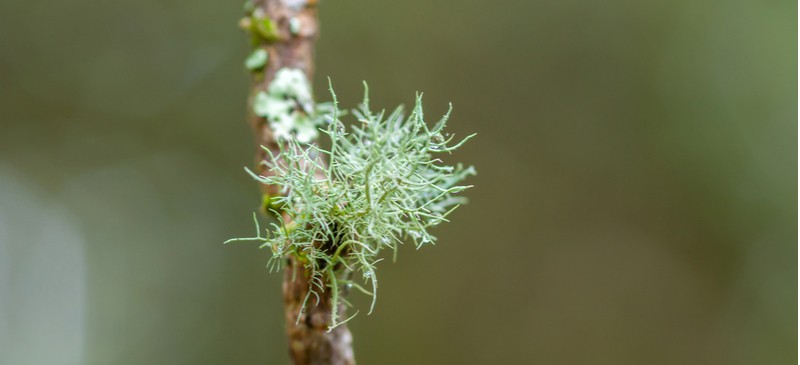This Dr. Axe content is medically reviewed or fact checked to ensure factually accurate information.
With strict editorial sourcing guidelines, we only link to academic research institutions, reputable media sites and, when research is available, medically peer-reviewed studies. Note that the numbers in parentheses (1, 2, etc.) are clickable links to these studies.
The information in our articles is NOT intended to replace a one-on-one relationship with a qualified health care professional and is not intended as medical advice.
This article is based on scientific evidence, written by experts and fact checked by our trained editorial staff. Note that the numbers in parentheses (1, 2, etc.) are clickable links to medically peer-reviewed studies.
Our team includes licensed nutritionists and dietitians, certified health education specialists, as well as certified strength and conditioning specialists, personal trainers and corrective exercise specialists. Our team aims to be not only thorough with its research, but also objective and unbiased.
The information in our articles is NOT intended to replace a one-on-one relationship with a qualified health care professional and is not intended as medical advice.
Usnea Benefits for the Kidneys, Immunity, Respiratory System & More
April 17, 2021

Usnea is an herbal preparation that has been used in Traditional Chinese Medicine (TCM) for over 2,000 years, including to support the kidneys, respiratory system and immune system in other ways, such as by fighting infections.
According to the Gaia Herbs website, usnea lichen is known for its cooling and drying energetic properties and its ability to “clear heat, move damp, and resolve toxicity.” When used as a tincture or extract (sometimes called “old man’s beard”) it may help clear up symptoms caused by colds, viruses and more.
What Is Usnea?
Usnea (Dolichousnea longissima, U. barbata and U. californica) is a species of lichens, which are a combination of fungus and algae that grow together on host trees found all over the world. Usnea species can appear as gray, white, red or black plant bodies that are used to make supplements in herbal medicine.
The genus of trees that these species grow on are members of the plant family called Parmeliaceae. These trees tend to grow in moist, cool climates, such as those in the Pacific Northwest of the U.S.
There are believed to be between 40 and 80 species of usnea, depending on different classification systems that are used in different countries.
Is usnea edible? Yes, but it’s typically not eaten in the plant form.
Instead, usnea is taken internally as a liquid extract or applied topically to the skin or the inside the mouth. It can also be used to make herbal tea.
Other names that usnea goes by include:
- beard moss
- beard lichen
- old man’s beard
- woman’s long hair
- tree moss
When used medicinally, it’s sometimes listed as sodium usniate, which contains the active ingredient usnic acid. Usnic acid is a phenolic compound with dibenzofuran structure that has been shown to have potential anti-cancer effects.
Because it can take a long time to grow on trees, it’s now also produced in labs to speed up production.
Benefits
There are a number of active constituents found in usnea, including not only its most active compound usnic acid, but also polyphenols and other antioxidants. These include:
- Norstictic acid, which has been found to have the largest antioxidant activity in certain usnea species
- Barbatinic acid
- Beta-sitosterol
- Depsides
- Dihydrousnic acid
- Evernic acid
- Glutinol
- And many others
What is usnea used for? Some of the conditions that it’s typically used to treat include:
- Human papilloma virus (HPV) symptoms, when combined with other substances, including zinc sulfate. This preparation can be applied to the vagina before and after surgical removal of HPV sores to help with healing and reduce recurrence of HPV.
- Pain
- Fever
- Swelling and inflammation
- Kidney problems
- Coughs
- Indigestion
- Certain types of infections, such as those affecting the throat, respiratory tract, mouth, skin and urinary tract
- Skin wounds that won’t easily heal
- Weight gain, due to its potential ability to support metabolic processes
- Possibly certain types of cancer, due to its antioxidant and free radical-scavenging capabilities
Is usnea antiviral and antibacterial? Research suggests that it has a number of anti-inflammatory and antimicrobial properties, including acting as an antifungal and antibacterial against bacteria such as Streptococcus and Staphylococcus.
This is why you’ll find it in herbal formulas intended to help treat colds, sore throats, skin infections, wounds and more.
Additionally, it’s added to a variety of cosmetics since its compounds, including usnic acid, serve as preservatives and deodorants. (They prevent bacteria from growing that can cause spillage and odor.) You’ll sometimes find usnic acid listed as an ingredient in personal and beauty products, such as skin lotions, toothpastes, mouthwash, deodorants, hair shampoos and sunscreens.
Dosage/Uses
When taken in extract or tincture form, usnea lichen is sometimes mixed with other herbs that support the immune system.
Liquid extracts are placed under the tongue, which helps them be absorbed quickly. You may need to take anywhere from 20 to 60 drops per serving, two to three times daily (or about 0.5 to 2 mL per serving).
The tincture can be mixed with water or another beverage to improve the taste.
Always read dosage recommendations and directions carefully for the product you’re using, since the strength of different tinctures and products varies. Many usnea tinctures are recommended for short-term use when you’re sick, such as for two to three weeks.
It’s best not to use these products long-term unless working with a doctor to treat a specific issue.
Other ways to use usnea include applying it to the skin and making herbal tea.
How do you make usnea tea? Here’s a basic recipe for making the tea at home:
- Combine a handful of fresh or dried usnea strands in 1 pint of very hot water.
- Allow the brew to simmer for about 30 minutes in a covered container.
- Once cooled enough to drink, consume about ¼ cup at a time, several times paced throughout the day.
You can also make your own usnea tincture using alcohol and water at home if you’re willing to wait several days for it to be ready. To make a homemade usnea tincture, most people use a crockpot to slowly steep the strands.
A basic recipe for making herbal tinctures is to mix alcohol and water together in a 1:1 ratio (use alcohol that is at least 40%—60% pure alcohol), fill a jar 1/2 full of herbs, cover it with your water/alcohol mixture, and let it sit for two to six weeks.
Risks and Side Effects
When used in high concentrations, usnea may lead to side effects and rarely even toxicity. Potential side effects can include:
- nausea
- weakness and fatigue
- abdominal pain
- yellowing of the skin
These typically start within several weeks of use.
Some research has demonstrated a link between usnic acid use in high amounts and liver damage. For example, sodium usniate is found in the weight loss product LipoKinetix, which has been shown to contribute to liver damage in a number of cases.
The U.S. Food and Drug Administration issued a warning about this supplement in 2001 after receiving 21 reports of liver toxicity related to its ingestion.
Be very careful about using weight loss products containing this ingredient, following directions carefully (or avoiding taking it altogether). If you have liver disease, don’t take usnea unless working closely with your doctor.
Because there isn’t enough research showing that it’s safe to use during pregnancy or while breastfeeding, avoiding taking usnea in these situations.
Conclusion
- Usnea lichen (sometimes called by other names such as beard moss, beard lichen or old man’s beard) is an herbal treatment made up of fungus and algae that grow on more than 40 types of trees (Dolichousnea longissima, U. barbata and U. californica).
- It’s taken internally as a liquid extract/tincture or applied topically to the skin or the inside the mouth.
- When used medicinally, it’s sometimes listed as sodium usniate, which contains the active ingredient usnic acid.
- Potential benefits of usnea include fighting infections of the respiratory system and urinary tract, preventing skin infections, helping heal from HPV, reducing fevers, decreasing pain, and potentially aiding in weight loss.

